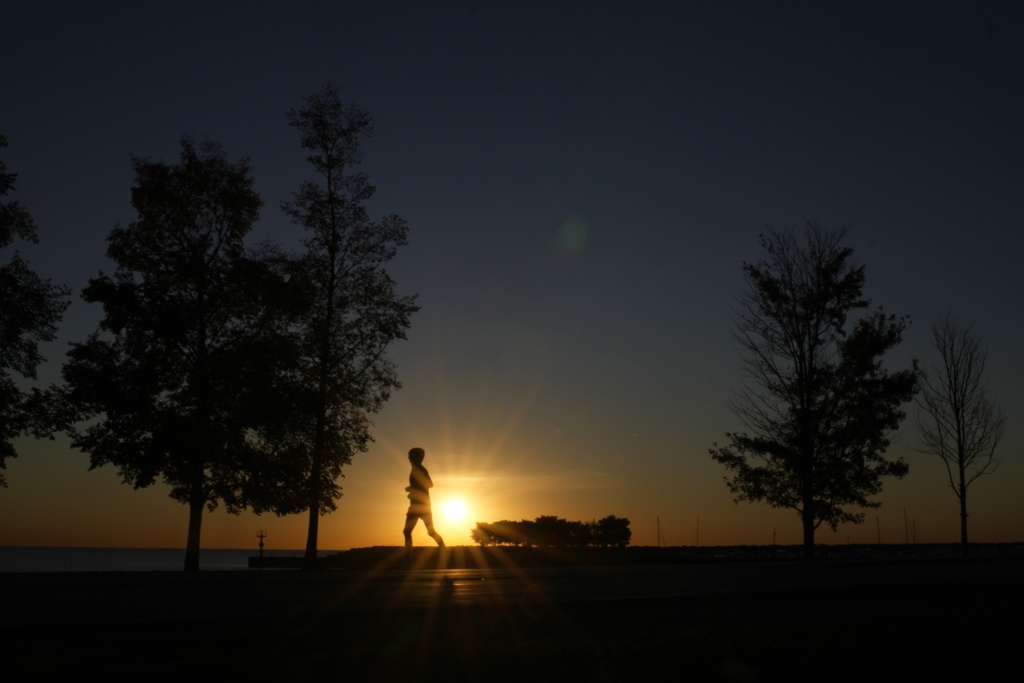Dry October Sparks Drought and Low Mississippi River Levels \ Newslooks \ Washington DC \ Mary Sidiqi \ Evening Edition \ A historically dry October has plunged nearly 50% of the U.S. into flash drought conditions, sparking wildfires in the Midwest and limiting shipping on the Mississippi River. Many cities, including New York and Houston, have seen no measurable rain, while unseasonably warm temperatures and persistent high-pressure systems prevent relief. Meteorologists warn this flash drought may worsen with climate-driven weather patterns locking systems in place.

Severe Flash Drought Conditions and Wildfires in U.S. October: Key Points
- Widespread Dry October: Nearly 50% of the U.S. is now in flash drought, with dozens of states experiencing historically low rainfall.
- Impact on Major Rivers: Low water levels on the Mississippi River are hindering agricultural shipments, intensifying an already challenging season.
- Unusual Heat Waves: Cities like Washington and Detroit are forecast to reach 80°F in late October, pushing temperatures far above average.
- Climate Change Link: Studies show a warming Arctic and climate change are creating more frequent, intense flash droughts and blocking weather patterns.
- Relief and Risks Ahead: Storm systems may bring rain to the Midwest soon, but much of the East and Southeast could stay dry, worsening fire risks.
Deep Look
Flash Drought Grips Nearly Half of U.S. in Record Dry October, Triggering Fires and Low River Levels
“This is on pace for a record dry October,” said Allison Santorelli, acting warning coordinator for NOAA’s Weather Prediction Center. In June, less than 12% of the U.S. was experiencing drought; that figure has now risen to nearly 50%, according to the U.S. Drought Monitor, and experts expect it to continue climbing. Brad Rippey, a meteorologist with the U.S. Department of Agriculture, explains that the current flash drought differs from traditional droughts, which develop gradually. Instead, flash droughts are sudden and often more damaging, especially as warmer global temperatures increase their frequency.
Extreme Weather Whiplash and Stubborn Heat Dominate October
Record-low rainfall has not only fueled flash drought but is also bringing unseasonably high temperatures, with many cities forecasted to approach 80 degrees even as October ends. Washington, D.C., is set to reach 80°F on Halloween, following closely behind Chicago and Detroit, which are experiencing near-summer temperatures. “That’s wild for the end of October,” remarked meteorologist Ryan Maue, who remembered trick-or-treating in Michigan snow as a child.
This unusual warmth stems from a persistent dome of high pressure that has blocked moisture from traveling north from the Gulf of Mexico, keeping much of the Plains, Midwest, and East Coast dry for nearly two months. The stagnant weather pattern, described by Rippey as a “blocking pattern,” has created a stark contrast to the heavy downpours and flooding the Southeast faced just weeks prior from Hurricane Helene. Asheville, North Carolina, for instance, saw almost 14 inches of rain in just three days in September, yet has recorded only 0.01 inches of rain in October.
Climate Change’s Role in Rising Flash Droughts
Brad Rippey added that these “stuck” systems create conditions for extreme weather “whiplash,” such as what occurred in Sioux City, Iowa, where excessive June rains collapsed a railroad bridge. The subsequent dry spell in October has only worsened, heightening concerns over prolonged drought conditions and water availability across the country.
Mississippi River Levels and Agricultural Impacts
The Mississippi River, a critical transportation route for U.S. crops, is experiencing water levels so low that shipping loads must be reduced, limiting agricultural exports and raising shipping costs. This is the third consecutive year of problematic water levels on the Mississippi, noted Rippey, who said that floodwaters from Hurricane Helene temporarily boosted river levels but failed to bring lasting relief. This flash drought, which fortunately hit after most corn and soybean harvests were completed, continues to affect other crops and commodities reliant on river transport.
In addition to lower water levels, dry fields create ideal conditions for wildfires, which have already been reported in the Midwest and East. “We’ve seen fires sparked by farm equipment in these dry fields,” Rippey added. According to the National Interagency Fire Center, five large fires burned over 1,000 acres across these regions as of Tuesday.
Rain on the Horizon for Parts of the Midwest
Looking Ahead: Risks of Continued Dry Conditions
With almost 50% of the U.S. facing drought, officials are watching closely for signs of worsening conditions and planning for possible long-term impacts. Flash droughts, intensified by climate-driven heat and blocked weather systems, can devastate agriculture, increase wildfire risks, and limit water resources for millions. Experts warn that the U.S. may continue to see more intense flash droughts if current warming trends persist, affecting everything from food production to river levels essential for shipping.
As the drought expands, weather patterns will continue to play a pivotal role, influencing water resources, agriculture, and overall safety. The National Weather Service and climate research centers are actively monitoring the situation, noting that while the current drought may end for some regions with incoming rain, other areas may face prolonged dry spells with critical consequences.







